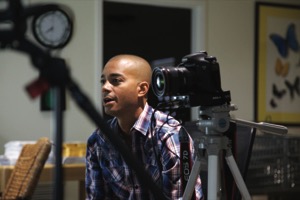
One of the less-publicized but equally important victories to come out of the U.S. Supreme Court’s 2015 decision to legalize same-sex marriage was the now-new ability to adopt children. It would take exactly two years to the day for the court to strike down an Arkansas law that tried to uphold the ban but strike it down it did.
And for the approximately 400,000 children under 18 in the United States foster care system, the news couldn’t have come soon enough. The barriers, many built on a shibboleth of myths and fearmongering that prevented gay and lesbian couples from becoming families, were leveled.
But the decision to adopt, either outright or through the foster care system, is a decision that is not entered into lightly as Carlton Smith’s engaging documentary – Finding Life – shows. These couples share their intimate thoughts, fears and biases as any expectant parent would. It’s a much needed exploration of the new landscape available to gay couples and a timely analysis of the continuing expansion of rights being accorded the LGBTQ community.
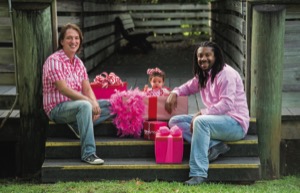
(For the record, there are some fundamental differences between adopting and fostering children. Most notably, adoption is a legal process whereby the court transfers all the parental rights for the child to the new parents. In fostering a child, the birth parents retain all the rights normally associated with parenting a child until the child turns 18. The lines do, however, intersect as both options put the welfare of the child front and center.)
San Diego LGBT Weekly: How did you decide which couples to illustrate in the documentary? What response surprised you most during the audition process? I’m sure I’m not the first to ask, but why just the one lesbian couple?

Carlton Smith: We held a casting call for potential parents. Some of the parents had gone through the foster care process and some had not. We looked for the couples that were willing to share their stories and had a compelling message to go along with it. We wanted to look for variety also. I wanted couples of different ages with kids of different races. We were really hoping to show the spectrum of people that are out there wanting to foster or adopt. In regards to the one lesbian couple … At the time, they were the only women that were available and interested in doing our film.
Why this subject? Are you or anyone in your crew foster parents?

I am a gay man and my partner and I were considering becoming foster parents. I thought that I could film us going through the foster care program while sharing the stories of these other families. However, once my partner and I started diving into foster care and seeing just what all these potential families had to go through, we got scared and decided we weren’t ready. So I then decided that we could still tell the story even if we weren’t a part of it in that respect. I was drawn to do this film after meeting John and Frank years ago. I met them and saw them with their child and thought their story needed to be told. It was years after meeting them when I called them to see if they would be interested in participating. Eventually, John became one of my producers.
The title of your documentary, Finding Life, elicits many meanings. What’s yours?
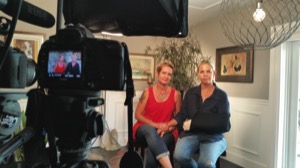
I came up with the title because I thought that these couples were out there trying to find and create new lives with their own families. Through the experience of sharing their lives and love with these kids, they’ve found their own lives changed in ways they could not have entirely foreseen.
Did you reach out to anyone opposed to same-sex fostering and/or adoption?
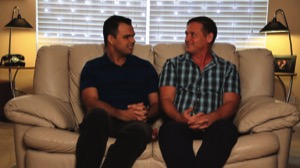
That was initially a thought and we actually did approach some people to show the other side. However, after much thought, we decided that this should just be a happy, positive film. A film that shares stories to inspire people to want to be part of the solution. Why highlight the negativity that we all know very well is out there? Those who stand in opposition to these loving families because they have “chosen” the “wrong” person to love have made their position clear by brow beating the rest of us for as long as I can remember. In the end, we chose not to highlight their opinions of our families. Their opinions are not new and they are well-known. The stories of our families, however, that is something that is relatively new. Something that your average person might not even be aware of. There are many kids that need loving homes. There are a lot of gay couples who are willing to take kids in. There is a problem and here is a solution to that problem. We were more interested in making that the focus of our film.
I liked how you answered the central question – why not just adopt – in a meaningful way.
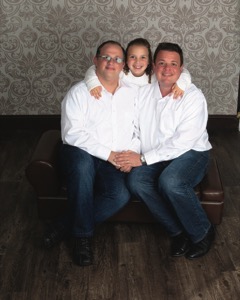
Thank you. That was a big deal to me. Letting couples know that they can foster before taking the larger step of adoption. It’s such a huge step to be that selfless. To let another soul into your home, your heart and your life. We want to show couples the foster care route is a viable option for gay families. Fostering is an option that allows them to find out for certain if they have what it takes to be parents while having the opportunity to share their love and their home with kids who are truly in need of that love. And if, for some reason, a particular foster placement is not working out, it doesn’t have to be permanent. Why shouldn’t a couple who believe they can provide a loving home to a child at least give it a shot?
What’s your next narrative going to be?
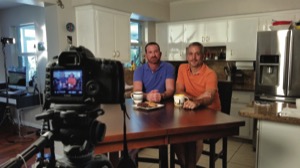
This is actually my second documentary. My first is titled The Black Miami and it is also available on VOD (Amazon, Google YouTube and more). It tells the story of how black people really built South Florida despite the fact that most people think of Miami as built by Hispanic people. The city was built on the backs of slaves and Caribbean people who were mostly black. Whenever I decide to take on a film I need to be inspired. The book, The Black Miami, inspired me to share that story. Meeting these gay foster families inspired me to want to tell their stories to inspire others to be parents regardless of your sexuality. There are so many kids out there that just need a home. What’s my next documentary? I’m not sure yet. There will be one. I’m always on the lookout for inspiration.
To watch the Finding Life trailer visit lgbtweekly.jeffjungblut.com. For more information on Finding Life visit findinglifemovie.com












Carlton Smith is a wonderful director. I have seen both of his documentaries and his compassion for his projects shows in his work. I look forward to his next project…
My husband knows what it takes to do a great documentary, but also knows how to connect with his audience. I stand by him and his endevours. This is a must watch film! P.S. I still want a kid/kids.
And where is our picture and details?
I would love a copy, John is my son and Marcus is my son in law. That beautiful girl is my granddaughter
Wow, I am so very proud of you and your major contribution to those topics that need to be shared with all communities.
Keep up the good work !!
Love,
Mom
Wonderful article and a very meaningful documentary. It is very much needed!
A wonderful documentary, and an amazing director. He has always had a knack for connecting with people in a very meaningful way.